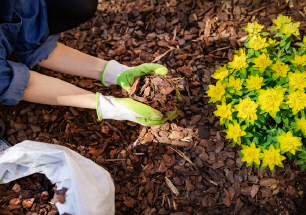First, make sure all supply preparation is done
- Sharpen blades and oil hinges
- Replace any tool that is unsalvageable
- Purchase fertilizer, soil amendments
- Make sure all accessories are in order (tomato cages, trellises, etc.)

Second, conduct a health check on your beds
- Soil should be crumbly, dark, and moist with its own ecosystem of critters to support your plant growth
- Test P.H levels of soil. 6.5 is ideal and will support most flowers and edible food
- To test moisture, stick a wooden dowel down about 6-12in (the area of the bed called the root zone) if the dowel comes out clean it’s dry, damn well-moistened soil will stick to the dowel.

Third, restock any necessary nutrients
- You can use products such as
- Fertilizers
- Rock minerals
- Seaweed/kelp
- Compost
- Worm castings
- Organic soil conditioners
- Composted manure
- Blood and bone meal.

Last, water then mulch
- Mulch is important to help
- Retail moisture
- Suppress weed growth
- Keep the soil cooler during the summer
- Help with soil aeration
- Make sure to water the beds prior to adding mulch. If you don’t, when you first water the mulch will soak up everything, and the bed underneath will still be dry.
- Too much mulch that is improperly applied in too thick of a layer kills plants and/or prevents proper growth.
- Most perennials and annuals need lots of air and the ability to spread to thrive. Over mulching or using the wrong mulch prevents good, productive growth when the mulch binds.

